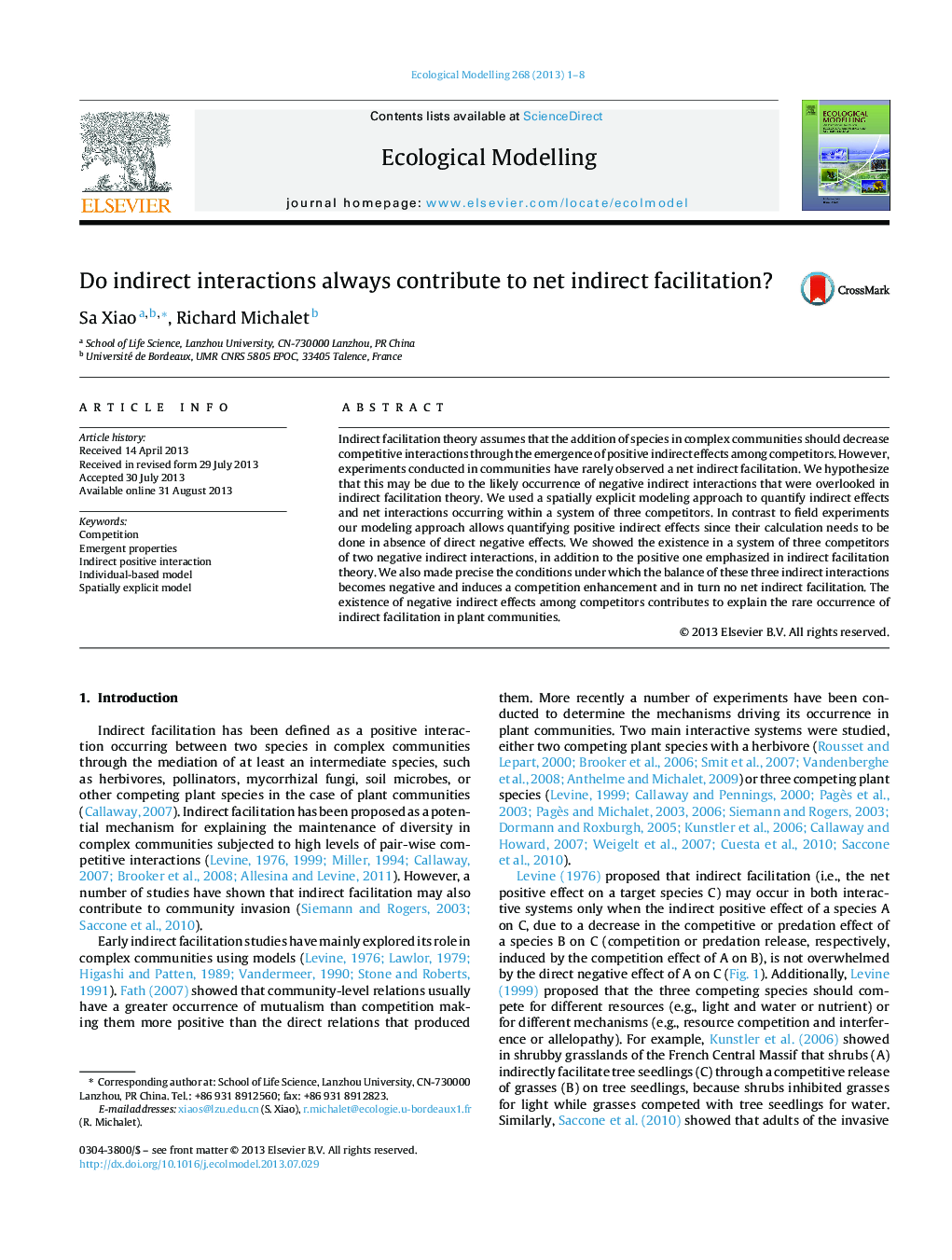| Article ID | Journal | Published Year | Pages | File Type |
|---|---|---|---|---|
| 6297040 | Ecological Modelling | 2013 | 8 Pages |
Abstract
Indirect facilitation theory assumes that the addition of species in complex communities should decrease competitive interactions through the emergence of positive indirect effects among competitors. However, experiments conducted in communities have rarely observed a net indirect facilitation. We hypothesize that this may be due to the likely occurrence of negative indirect interactions that were overlooked in indirect facilitation theory. We used a spatially explicit modeling approach to quantify indirect effects and net interactions occurring within a system of three competitors. In contrast to field experiments our modeling approach allows quantifying positive indirect effects since their calculation needs to be done in absence of direct negative effects. We showed the existence in a system of three competitors of two negative indirect interactions, in addition to the positive one emphasized in indirect facilitation theory. We also made precise the conditions under which the balance of these three indirect interactions becomes negative and induces a competition enhancement and in turn no net indirect facilitation. The existence of negative indirect effects among competitors contributes to explain the rare occurrence of indirect facilitation in plant communities.
Related Topics
Life Sciences
Agricultural and Biological Sciences
Ecology, Evolution, Behavior and Systematics
Authors
Sa Xiao, Richard Michalet,
